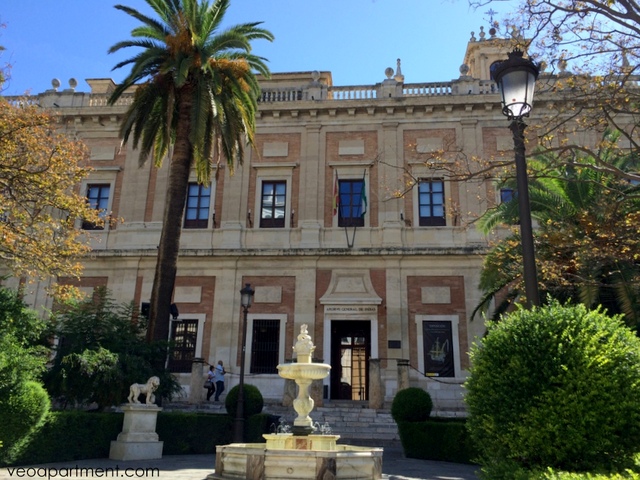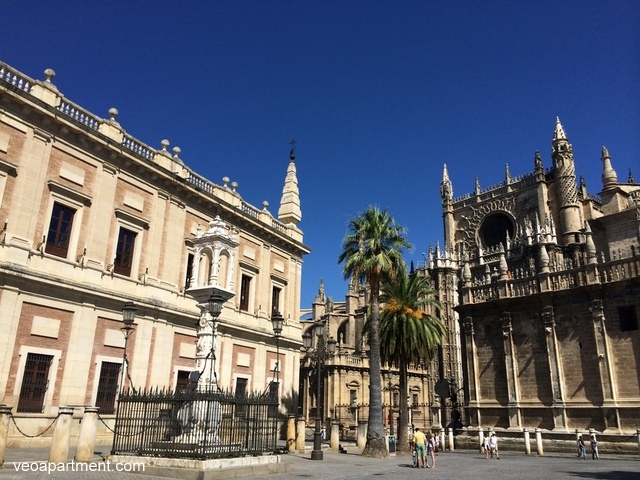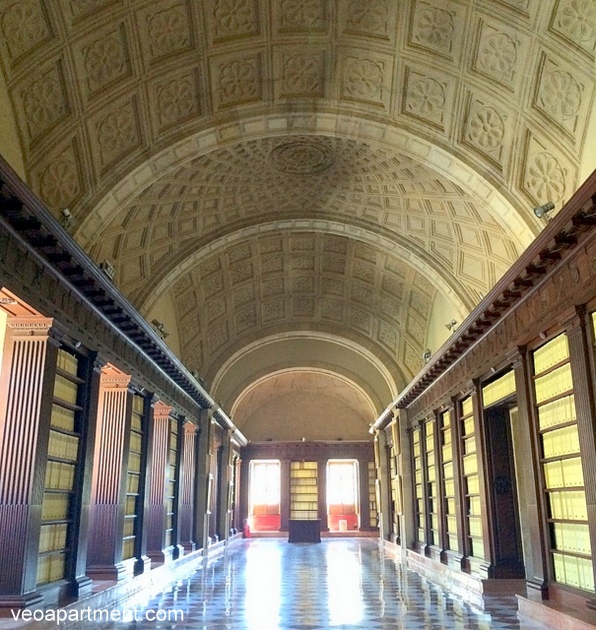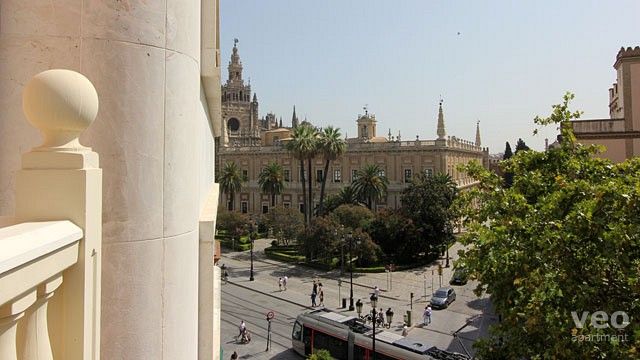
Front facade
The Archivo General de Indias, or General Archive of the Indies, is the third of Seville’s World Heritage Sites, and together with the first two, the Cathedral and the Alcazar Palace, makes up the main monumental area of Seville. Although it’s something of a poor relation to its more famous neighbours, the Archives building is worth a visit, and has the added bonus of being free, and there are often special exhibitions, usually on the themes of sailing and exploration. The Archives themselves, comprising some 43,000 volumes and 80 million pages of documents (even back then the Spanish bureaucracy excelled at generating paperwork) are housed partly on the ground floor, but now mainly in a second, specially designed, building across the street, and are still an important primary resource for historians and researchers.
The Archives were not originally constructed for that purpose, though, but to provide a headquarters and a trading house for the members of the Merchants’ guild. Following the discovery of the Americas by Columbus in 1492 Seville was awarded the monopoly of the trade, and the number of merchants operating in Seville expanded enormously, outgrowing their existing facilities. Because of their proximity to the port, the Palace, and, a little later, to the Ayuntamiento, the steps of the Cathedral became a favoured place for them to conduct business (next to the Puerta del Perdón one of the Cervantes plaques mentions them in this context, “lugar de contratación”), causing considerable friction between civil and ecclesiastical authorities. Finally, in 1572, Philip II commissioned the architect Juan de Herrera to design and build the Casa Lonja (Commodities Exchange). Construction began in 1584, and by 1598 the building was ready for use (though not fully completed until 1646).

Rear facade from Plaza del Triunfo
Within a hundred years, however, the port of Seville began to silt up, and by the early 1700s the Lonja was seriously underused, and with the transfer of the Consulado de Mercaderes to Cadiz in 1717, it was virtually deserted, and began to be used as a common rooming house. It was saved from further deterioration when in 1785 Charles III decreed that a number of separate archives should be transferred to Seville. The residents were duly evicted, and before the end of the year the first documents began to arrive. Among the alterations and repairs carried out to make the building suitable for its new use was the construction of the Grand Staircase. The gardens at the front were added during the creation of the Avenida de la Constitución in the 1920s.

Inside the Archives
The Archives building is an impressive two-storeys high square around a large central courtyard, the exterior being relatively simply ornamented in an Italian influence Renaissance style. Inside, the halls that go right around the building are lined with box files, giving an impression of what the place looked like in use, but they’re empty, just for show. There are some charts and other memorabilia, and also a film show in a curtained-off cinema detailing the history of the building. Actually worth watching, and not too long.
Veoapartment has two groups of holiday apartments (Constitución and Alcázar) to let that are just across the avenue, and give a superb view of the Heritage complex.

View from Constitución apartments